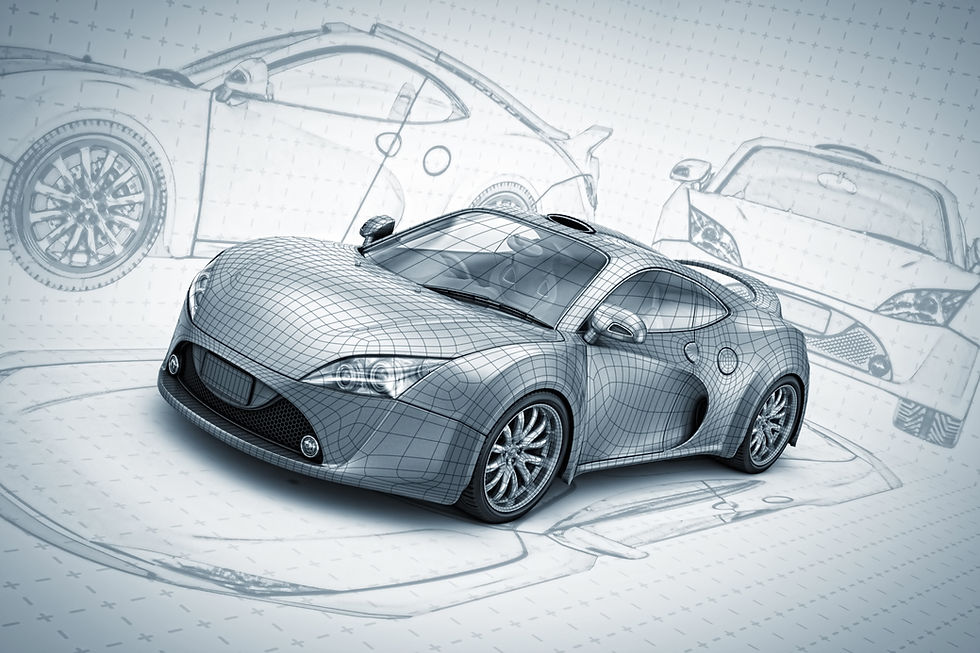Where Manual Transmissions Are Headed: Why Enthusiasts Still Love Them
- Robert Routt

- Dec 29, 2024
- 4 min read
The automotive landscape has evolved quickly in recent years, with electric cars and cutting-edge automatic gearboxes now dominating the market. Yet, manual transmissions still occupy a unique space in the hearts of driving enthusiasts. Their hands-on experience offers a direct connection to the road that modern technology struggles to match. Read on to discover why this classic preference remains strong—and what the future holds for the beloved manual transmission.

The Unique Connection of a Manual Gearbox
Operating a manual gearbox demands both skill and focus, as every shift immerses the driver in the experience and fosters a unique bond with the vehicle. The precision required makes mastering a manual transmission a thrilling challenge—one that enthusiasts view as a way to refine their driving skills. In many ways, this mirrors the college learning process, where students show the same dedication in their studies. When they need to enhance their assignments, they might seek support from paper writing services like EduBirdie, which provides custom-tailored academic solutions to boost confidence and improve writing quality.
Both driving and academic pursuits require effort and attention to detail. Yet, the hard work pays off with a genuine sense of accomplishment. These challenges teach patience, help develop key skills, and offer deep satisfaction upon completion.
Efficient Driving: Why Enthusiasts Prefer a Stick Shift
Efficiency is one of the key reasons enthusiasts lean toward manual transmissions. Having direct control over the engine’s power lets drivers decide exactly when to downshift for more power or select the optimal gear for speed and terrain. This level of engagement is especially rewarding on highways or winding back roads, where a keen sense of control can make all the difference.
Manual transmissions offer several additional benefits:
They’re lighter, reducing overall vehicle weight.
They deliver better acceleration for spirited driving.
Their simpler design often means greater reliability.
These features make a manual gearbox the go-to choice for those who prioritize performance over convenience. Despite evolving automotive trends, this classic approach continues to captivate driving enthusiasts everywhere.
Cost and Simplicity: A Practical Advantage
Although automatic transmissions have become more efficient, manuals remain popular thanks to their straightforward design. They’re cheaper to manufacture, repair, and maintain, making them a cost-effective option. It’s estimated that around 25% of drivers worldwide still choose manual transmissions for their reliability—especially among enthusiasts who restore classic cars, where a simple design is key.
Manual transmissions also have fewer electronic components, reducing the likelihood of breakdowns and making them both durable and economical over time.
In a modern world that often prioritizes convenience, a manual transmission is a reminder of the beauty of simplicity. This mindset reflects a growing interest in minimalism and practical solutions that genuinely meet people’s needs.
A Tool for Learning Driving Skills
Mastering a manual transmission cultivates crucial driving abilities—coordinating the clutch, brake, and accelerator demands sharpened reflexes and deeper focus. Many believe this hands-on experience helps drivers become more attentive and confident on the road.
This practical approach resonates with those who value traditional methods. Feeling the mechanics of each gearshift offers a closer bond with the car itself, so much so that enthusiasts view driving stick as a lifestyle choice. Despite the decline in manual production, many still consider it an essential rite of passage, fostering greater confidence, control, and a respect for automotive heritage.
Learning to drive stick can be compared to tackling college-level studies: both require practice, concentration, and patience. Students often check out free essay samples to grasp complex topics, much like novice drivers practicing shifting skills. Neither pursuit is about quick fixes; it’s about establishing a solid foundation that sets you up for future success. In both academia and manual driving, the effort invested in mastering the basics leads to heightened control, confidence, and achievement in the long run.
The Future of Manual Transmissions in a Changing Industry
As electric vehicles and advanced automatic gearboxes gain popularity, the future of manual transmissions can appear uncertain. Yet their distinctive appeal continues to thrive in certain segments, especially in sports cars, classic models, and high-performance vehicles that still offer a manual option.
Automakers recognize the emotional bond drivers form with a stick shift. Nostalgia and the desire to maintain tradition keep manuals alive—much like analog watches coexist with their digital counterparts, offering an authentic experience that resonates with enthusiasts.
Despite the rise of new technologies, these factors show that manual transmissions will always find an audience drawn to their timeless charm and hands-on engagement.
Conclusion: The Timeless Appeal of the Manual Transmission
Even amid rapid changes in the automotive industry, the manual transmission stands firm as a symbol of control, engagement, and pure driving enjoyment. Enthusiasts prize the blend of complexity and simplicity it provides. While its role may evolve with new technologies, the manual gearbox will likely remain a staple for those who value the art of driving. Its enduring popularity proves that not all traditions fade—hands-on, personalized experiences still resonate in an ever-automated world.





Comments